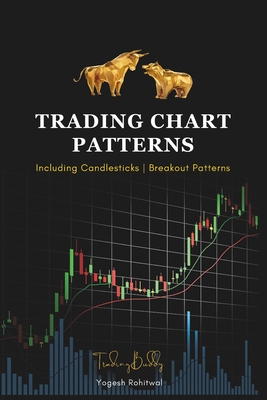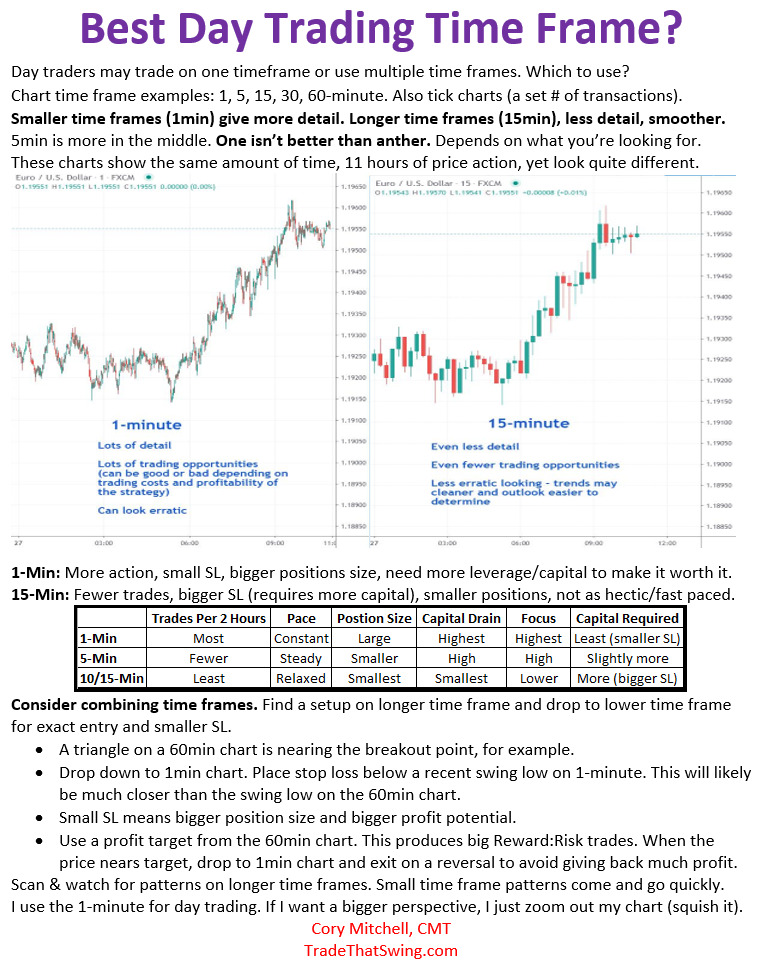Did you know that some traders believe that over 90% of their success comes from the right chart patterns, while the other 10% is just trying to remember where they put their coffee? Understanding technical analysis is crucial for options day trading, and this article breaks it down into key components. Learn about the essential indicators that inform trading decisions, the significance of volume, and how support and resistance levels guide strategy. Discover the impact of moving averages, candlestick patterns, and trend identification on your trades. Plus, we’ll cover tools for analysis, risk management tips, common pitfalls to avoid, and resources for further learning. With insights from DayTradingBusiness, you’ll be equipped to enhance your options trading strategy effectively.
What is Technical Analysis in Options Day Trading?
Technical analysis in options day trading involves analyzing price charts and trading volume to make informed decisions about buying and selling options. Traders use indicators like moving averages, RSI, and MACD to identify trends, momentum, and potential reversals. By studying patterns and signals, traders aim to predict short-term price movements of the underlying asset, allowing them to capitalize on options price changes. Effective technical analysis helps day traders manage risk and optimize entry and exit points in their trades.
How Do You Apply Technical Analysis to Options Trading?
To apply technical analysis to options trading, start by analyzing price charts of the underlying asset. Look for key indicators like moving averages, RSI, and MACD to identify trends and potential entry points. Use support and resistance levels to set target prices and stop-loss orders.
For day trading, focus on shorter time frames, such as 5-minute or 15-minute charts. Monitor volume for confirmation of price movements. Select options with high liquidity to ensure tighter spreads and easier execution. Finally, be aware of earnings reports or news events that can impact volatility, affecting your options strategy.
What Are the Key Indicators for Options Day Trading?
Key indicators for options day trading include:
1. Volume: Look for high trading volume to confirm trends.
2. Open Interest: Indicates the number of outstanding contracts, helping assess liquidity.
3. Implied Volatility: Higher volatility often means larger price swings, useful for options pricing.
4. Moving Averages: Use short-term moving averages (like the 5-day or 10-day) to identify trends.
5. Relative Strength Index (RSI): Helps assess overbought or oversold conditions.
6. Bollinger Bands: Show volatility and price levels; use them to spot potential reversals.
7. Support and Resistance Levels: Determine where the price may bounce or reverse.
Combine these indicators for a more informed strategy in your options day trading.
How Can Chart Patterns Improve Your Options Trading Strategy?
Chart patterns can enhance your options trading strategy by providing visual cues about potential price movements. Recognizing patterns like head and shoulders, flags, or triangles helps you identify entry and exit points. For instance, a breakout from a triangle pattern may signal a strong move, guiding your options trade. Additionally, combining chart patterns with volume analysis can confirm signals, increasing your chances of success. Use these patterns to anticipate market behavior, manage risk, and optimize your trades effectively.
What Role Does Volume Play in Options Day Trading?
Volume in options day trading indicates the level of interest in a particular option, affecting liquidity and price movement. High volume suggests strong market participation, making it easier to enter and exit positions without significant price impact. Traders use volume alongside price patterns to confirm trends—rising volume with increasing prices signals strength, while declining volume may indicate weakness. Monitoring volume helps identify potential breakouts or reversals, guiding trading decisions. In summary, volume is crucial for assessing market sentiment and ensuring efficient trades in options day trading.
How Do Moving Averages Assist in Options Trading Decisions?
Moving averages help in options trading by smoothing price data to identify trends and potential reversal points. Traders use simple moving averages (SMA) or exponential moving averages (EMA) to spot entry and exit signals. For example, if the price crosses above a moving average, it may signal a bullish trend, prompting a call option purchase. Conversely, a price drop below a moving average might suggest a bearish trend, indicating a put option could be beneficial. Additionally, moving averages can aid in setting stop-loss levels and target prices, enhancing risk management in options trading.
What is the Importance of Support and Resistance Levels?
Support and resistance levels are crucial in options day trading as they indicate price points where an asset tends to reverse direction. Support levels show where buying interest increases, preventing the price from falling further, while resistance levels highlight areas where selling pressure mounts, capping price increases.
Traders use these levels to make informed decisions about entry and exit points, setting stop-loss orders, and identifying potential price targets. By analyzing historical price action around these levels, traders can anticipate market behavior, increasing the likelihood of profitable trades. Understanding support and resistance enhances risk management and overall trading strategy effectiveness.
How Can You Use Candlestick Patterns for Day Trading Options?

To use candlestick patterns for day trading options, focus on key patterns like doji, engulfing, and hammer. Identify these patterns on your charts to spot potential reversals or continuations.
1. Entry Signals: Look for bullish patterns indicating a potential price increase when considering call options, and bearish patterns for put options.
2. Confirmation: Always wait for confirmation with the next candle before entering a trade. This reduces false signals.
3. Combine with Indicators: Use indicators like RSI or moving averages alongside candlestick patterns for stronger signals.
4. Set Targets and Stops: Define your profit targets and stop-loss levels based on the candlestick’s high or low to manage risk effectively.
5. Practice: Use a demo account to practice identifying and trading based on candlestick patterns before risking real money.
This approach can enhance your technical analysis and improve your day trading strategies for options.
What Are the Best Timeframes for Technical Analysis in Options Trading?

The best timeframes for technical analysis in options trading are typically 1-minute, 5-minute, and 15-minute charts for day trading. These shorter timeframes allow you to capture quick price movements. For swing trading, consider 1-hour and daily charts to identify trends while managing risk effectively. Always align your timeframe with your trading strategy and goals.
How Do You Identify Trends in Options Day Trading?
To identify trends in options day trading, start by analyzing price charts using technical indicators like moving averages and trend lines. Look for patterns such as higher highs and higher lows for bullish trends, or lower highs and lower lows for bearish trends. Use volume analysis to confirm trends; increasing volume often signals strength. Consider oscillators like the RSI or MACD to identify overbought or oversold conditions. Lastly, stay updated with market news and earnings reports, as these can impact volatility and trend direction.
What Tools and Software Can Help with Technical Analysis?
For technical analysis in options day trading, consider these tools and software:
1. TradingView: Offers advanced charting tools, customizable indicators, and social networking features for sharing insights.
2. ThinkorSwim: A powerful platform from TD Ameritrade with extensive charting capabilities and options analysis tools.
3. MetaTrader 4/5: Popular for forex, but also useful for options with customizable indicators and automated trading features.
4. NinjaTrader: Provides advanced charting, market analysis, and backtesting for day trading strategies.
5. StockCharts: Great for creating detailed charts and using various technical indicators for market analysis.
6. OptionsXpress: Offers tools specifically for options trading, including risk analysis and strategy-building tools.
These platforms help you analyze price movements, identify trends, and make informed trading decisions.
How Can Risk Management Enhance Your Options Day Trading?
Risk management enhances options day trading by protecting your capital and optimizing your returns. Implement stop-loss orders to limit losses on each trade. Diversify your trades to avoid overexposure to a single option. Use position sizing to control how much of your capital is at risk in each trade. Regularly review and adjust your strategies based on market conditions and technical analysis indicators. This disciplined approach allows you to stay in the game longer and increases your chances of consistent profitability.
What Common Mistakes Should You Avoid in Options Day Trading?

Avoid these common mistakes in options day trading:
1. Ignoring Technical Indicators: Relying solely on news or tips without using charts can lead to poor decisions. Use indicators like moving averages and RSI for better insights.
2. Overtrading: Trading too frequently can increase transaction costs and lead to emotional decision-making. Stick to a well-defined plan.
3. Lack of a Trading Plan: Trading without a clear strategy can result in random decisions. Establish entry and exit points based on technical analysis.
4. Misjudging Volatility: Underestimating implied volatility can result in unexpected losses. Understand how it affects option pricing.
5. Not Managing Risk: Failing to set stop-loss orders can lead to significant losses. Always define your risk per trade.
6. Chasing Losses: Trying to recover losses by increasing trade size often leads to bigger mistakes. Stay disciplined and stick to your strategy.
7. Neglecting Market Conditions: Ignoring broader market trends can skew your analysis. Always consider the overall market sentiment in your decisions.
By avoiding these pitfalls, you can enhance your options day trading effectiveness.
Learn about Common Mistakes in Day Trading Scalping and How to Avoid Them
How Do You Interpret Technical Analysis Signals for Options?
To interpret technical analysis signals for options, start by identifying key indicators like moving averages, RSI, and MACD. Look for price patterns such as support and resistance levels. Analyze volume to confirm trends; higher volume with price movement strengthens the signal. Use candlestick patterns to gauge market sentiment. For options specifically, focus on implied volatility and open interest to assess market expectations. Combine these signals to make informed decisions about entry and exit points for your options trades.
How Can I Use Technical Analysis for Effective Options Day Trading?
To use technical analysis for options day trading, focus on price charts, patterns, and indicators such as moving averages, RSI, and MACD. Identify key support and resistance levels to determine entry and exit points. Analyze volume trends to confirm price movements and use candlestick patterns for timing trades. Always consider implied volatility and the Greeks (Delta, Gamma) when selecting options.
Learn more about: Understanding Options in Day Trading
Learn about How to Use Technical Analysis in Crypto Day Trading
What Resources Are Available for Learning Technical Analysis?
To learn technical analysis for options day trading, consider these resources:
1. Online Courses: Websites like Udemy and Coursera offer specific courses on technical analysis tailored for options trading.
2. Books: "Technical Analysis of the Financial Markets" by John Murphy is a classic. "Options as a Strategic Investment" by Lawrence McMillan is also highly recommended.
3. Webinars and Tutorials: Platforms like Investopedia and TradingAcademy provide free webinars focusing on technical analysis for options.
4. Trading Platforms: Use platforms like Thinkorswim or TradingView, which offer tools and tutorials for technical analysis.
5. Forums and Communities: Engage with communities on Reddit (like r/options) or StockTwits to share insights and strategies.
6. YouTube Channels: Channels like "The Trading Channel" or "Warrior Trading" offer practical tips and live trading examples.
Utilize these resources to build a solid foundation in technical analysis for options day trading.
How Can Backtesting Improve Your Options Trading Strategy?
Backtesting allows you to evaluate your options trading strategy against historical data. By simulating trades based on past market conditions, you can identify which technical indicators perform best. This helps refine your entry and exit points, optimizing risk management. It also highlights potential flaws in your strategy, enabling you to make data-driven adjustments. Ultimately, backtesting increases your confidence in your approach and improves overall trading performance.
Conclusion about How to Use Technical Analysis for Options Day Trading
Incorporating technical analysis into your options day trading strategy can significantly enhance your decision-making and profitability. By understanding key indicators, chart patterns, and volume, you can identify trends and make informed trades. Utilizing tools, managing risks, and avoiding common mistakes are essential for success in this dynamic market. For those seeking to refine their skills, resources and backtesting can further improve your trading strategies. With the right approach and insights from DayTradingBusiness, you can maximize your potential in options day trading.
Learn about How to Use Technical Analysis in Crypto Day Trading